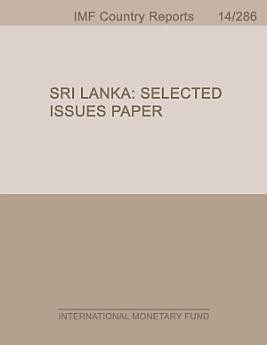Sri Lanka: Selected Issues
International Monetary Fund. Asia and Pacific Dept
Sep. 2014 · International Monetary Fund
E-boek
45
Bladsye
reportGraderings en resensies word nie geverifieer nie. Kom meer te wete
Meer oor hierdie e-boek
EXECUTIVE SUMMARY The first chapter on monetary policy transmission examines the channels through which innovations to policy variables—policy rate or monetary aggregates—affect such macroeconomic variables as output and inflation in Sri Lanka. The effectiveness of monetary policy instruments is judged through the prism of conventional policy channels (money/interest rate, bank lending, exchange rate, asset price channels) in VAR models, and the timing and magnitude of these effects are assessed using impulse response functions, and through the pass-through coefficients from policy to money market and lending rates. Our results show that (i) interest rate channel (money view) has the strongest Granger effect on output with 0.6 percent decrease in output after the second quarter and a cumulative 0.5 percent decline within a 3 year period in response to innovations in the policy rate; (ii) the contribution from the bank lending channel is statistically significant (adding another 0.2 percentage points to the baseline effect of policy rates) in affecting both output and prices but with a lag of about 5 quarters for output and longer for prices; (iii) the exchange rate and asset price channels are ineffective and do not have Granger effects on either output or prices. The second chapter takes a fresh look at the public debt reduction strategy. It asks two questions: (i) what has been driving the increase and subsequent decline in Sri Lanka’s public debt? (ii) Is Sri Lanka’s public debt too high, and if yes, how much, how fast and how should it be reduced? The chapter finds that, until recently, favorable interest rate-growth differential reflecting the combination of relatively high real GDP growth and low real interest rates on public debt has worked to reduce the debt ratio, even as primary deficits and occasional currency depreciation pushed the ratio in the opposite direction. More recently, however, the average borrowing costs began to increase, reflecting the reduced role of concessional financing and increased resort to market borrowing. Thus, debt reduction became more dependent on real growth and stronger primary balance, and this trend is likely to continue. The chapter documents that Sri Lanka’s public debt is one of the highest among the emerging economies, particularly when measured against the relatively low revenues, and suggests that the authorities target its gradual reduction to 50 percent of GDP, relying mainly on revenue measures. This target is more ambitious than the authorities’ medium-term objective of reducing the debt ratio to 60 percent of GDP, but it is considered by staff as prudent.
Gradeer hierdie e-boek
Sê vir ons wat jy dink.
Lees inligting
Slimfone en tablette
Installeer die Google Play Boeke-app vir Android en iPad/iPhone. Dit sinkroniseer outomaties met jou rekening en maak dit vir jou moontlik om aanlyn of vanlyn te lees waar jy ook al is.
Skootrekenaars en rekenaars
Jy kan jou rekenaar se webblaaier gebruik om na oudioboeke wat jy op Google Play gekoop het, te luister.
E-lesers en ander toestelle
Om op e-inktoestelle soos Kobo-e-lesers te lees, moet jy ’n lêer aflaai en dit na jou toestel toe oordra. Volg die gedetailleerde hulpsentrumaanwysings om die lêers na ondersteunde e-lesers toe oor te dra.








